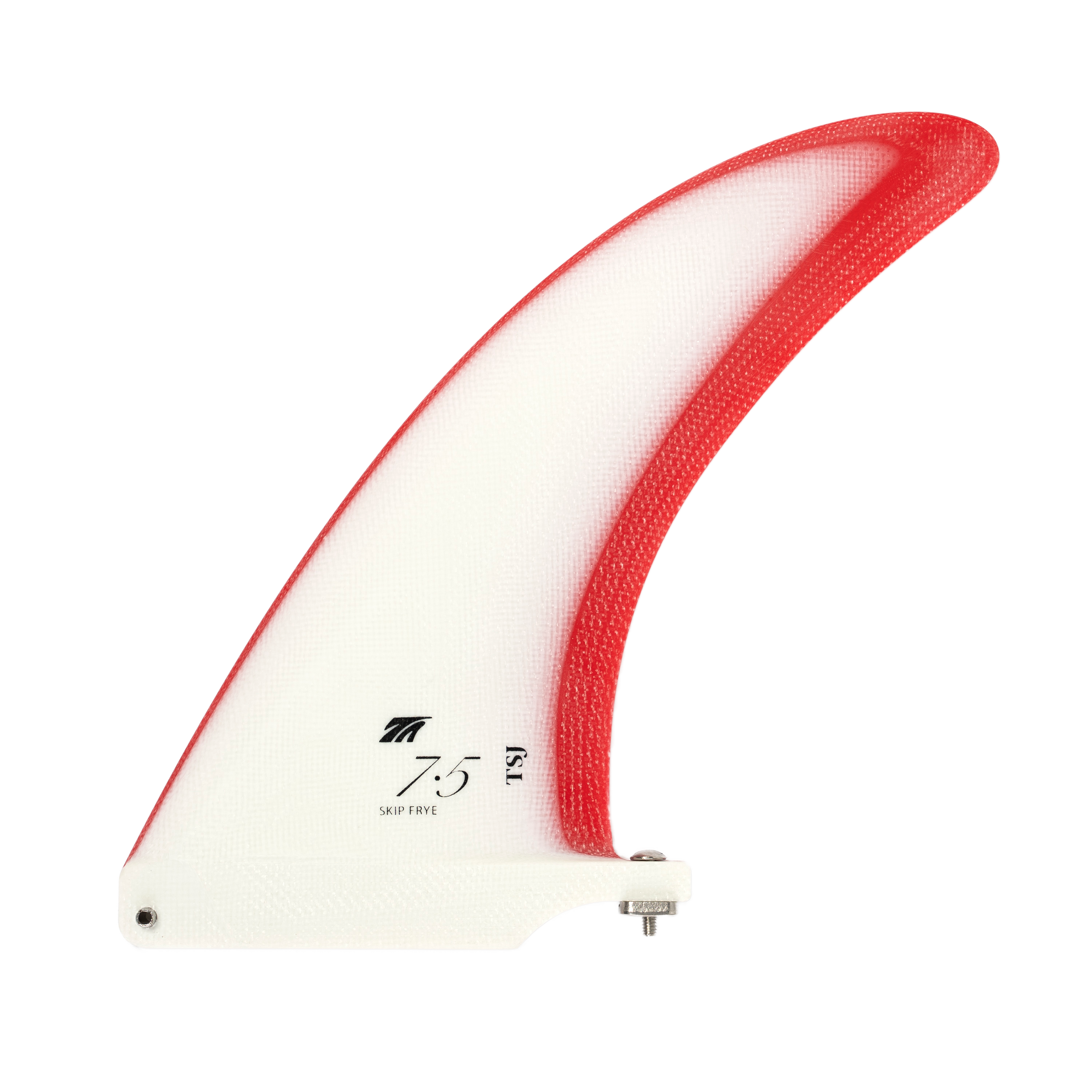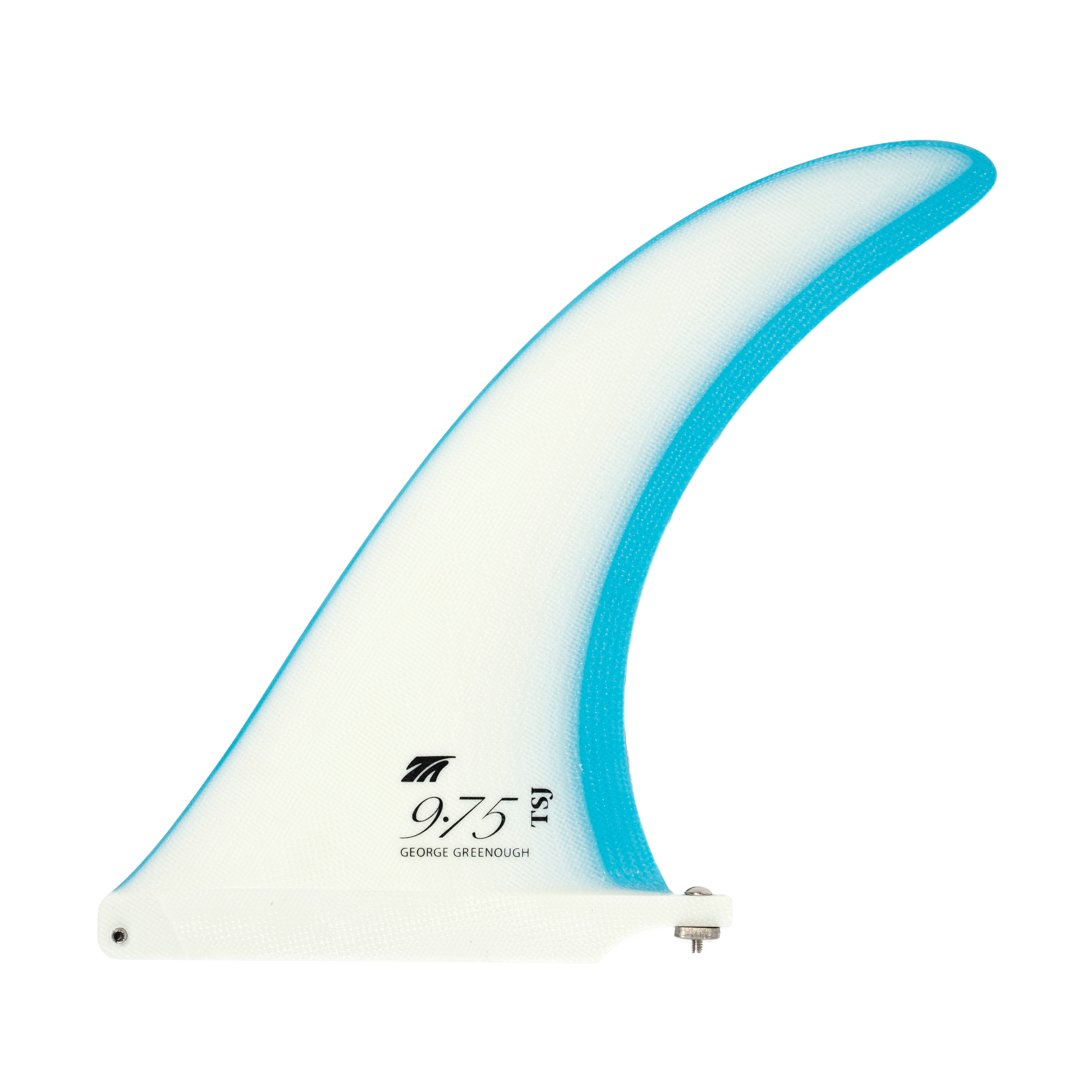



The Skip Frye
Skip Frye’s illustrious surfing career began back in the summer of 1958. By 1963, he began shaping boards himself. This soon led him to a job at Gordon & Smith, where he became an innovator in surfboard design. Throughout the 60s, Skip successfully competed as a surfer, became one of the original members of the Windansea Surf Club, and traveled the world in search of waves. Along the way, Skip met the influential shapers and surfers that would lead him to design a host of Frye models that still inform today’s surfing, from ultra gliders like The Eagle to the FishSimmons. Devised in the mid 70s, Skip Frye single-fins are straightforward, have clean lines, minimal rake, and classic curves—all components that lend themselves to fluid trim, minimal drag, and graceful surfing. Minimalistic and pure, Skip’s fins are designed to perform and excel in a supporting role for surfboards that rely on pinched rails to do the heavy lifting. As such, smaller dims are the go-to on these units.
Wave: PB Point

The Skip Frye
Skip Frye’s illustrious surfing career began back in the summer of 1958. By 1963, he began shaping boards himself. This soon led him to a job at Gordon & Smith, where he became an innovator in surfboard design. Throughout the 60s, Skip successfully competed as a surfer, became one of the original members of the Windansea Surf Club, and traveled the world in search of waves. Along the way, Skip met the influential shapers and surfers that would lead him to design a host of Frye models that still inform today’s surfing, from ultra gliders like The Eagle to the Simmons Fish. Devised in the mid 70s, Skip Frye single-fins are straightforward, have clean lines, minimal rake, and classic curves—all components that lend themselves to fluid trim, minimal drag, and graceful surfing. Minimalistic and pure, Skip’s fins are designed to perform and excel in a supporting role for surfboards that rely on pinched rails to do the heavy lifting. As such, smaller dims are the go-to on these units.
Wave: PB Point
The Greenough 4-A
As a “backyard” craftsman and innovator in the early 60s, George Greenough pushed the boundaries of speed, turning radius, and riding close in to the pocket at a time when heavy logs and D-Fins still reigned supreme. Perhaps George’s most influential contributions came from his initial exploration into high-aspect ratio fins, which allowed him to gain the acceleration he sought. Fast forward to modern times, the Greenough 4-A is the direct descendant of George’s early pioneering efforts, a fin template and foil radically different than anything previously known. Greenough 4-A has become a timeless staple, as well as the most popular single-fin ever made. A truly well-balanced fin, the 4-A’s full base and tapering, and moderately flexible tip, make it one of the most versatile and performance oriented single fins available. Designed for both speed generation and spending time surfing in the pocket, the 4-A is sure to provide a solid amount of drive off the bottom, as well as an acute responsiveness through arcing turns.
Wave: Rincon



The Greenough 4-A
As a “backyard” craftsman and innovator in the early 60s, George Greenough pushed the boundaries of speed, turning radius, and riding close in to the pocket at a time when heavy logs and D-Fins still reigned supreme. Perhaps George’s most influential contributions came from his initial exploration into high-aspect ratio fins, which allowed him to gain the acceleration he sought. Fast forward to modern times, the Greenough 4-A is the direct descendant of George’s early pioneering efforts, a fin template and foil radically different than anything previously known. Greenough 4-A has become a timeless staple, as well as the most popular single-fin ever made. A truly well-balanced fin, the 4-A’s full base and tapering, and moderately flexible tip, make it one of the most versatile and performance oriented single fins available. Designed for both speed generation and spending time surfing in the pocket, the 4-A is sure to provide a solid amount of drive off the bottom, as well as an acute responsiveness through arcing turns.
Wave: Rincon


The Yater Apocalypse
After more than six decades of shaping, Renny Yater is nothing short of a master craftsman. This fin is one Renny first played around with in the early 1960s, and is one that not only marked by heritage and performance capabilities, but also historical relevance. The Yater Apocalypse is named for its appearance in the critically acclaimed film Apocalypse Now, after screenwriter John Milius commissioned Renny to shape a couple boards for the character Lieutenant Colonel Kilgore. The Apocalypse fin on offer here is the same template that was glassed on to the surfboard seen in the film. A design that was as relevant 50 years ago as it is today, it inherently compliments so many aspects of longboarding. The fin provides plenty of hold, pivot, and drive, making it truly the perfect conception of an exceptional longboard fin. True to Yater’s simplistic, straightforward, and functional designs, this fin has the ability to transport your board to the iconic and effortlessly smooth surfing of the mid 1960s.
Wave: Malibu and C-Street









